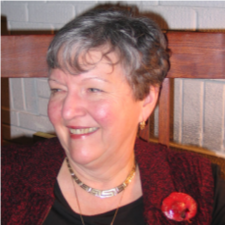Evelyn C. McDonald
Arts & Culture Reporter
November 2020

Amelia Lifelong Learning’s last program for the Fall 2020 season was a presentation from Marge Powell on southern folk medicine. The lecture covered the origin of local folk medicine starting with the Spaniards, slaves, and indigenous people, which she has discovered in her research of local customs. Marge found much of the information on southern folk medicine was oral and she has been trying to document what she’s learned.
Much of the documented information on folk medicine covers an area from Michigan to New England. A slightly smaller body of information runs from Appalachia to the mid-Atlantic coast. The smallest set of information covers the south, including the Florida-Georgia border area.
Southern folk medicine arose out of contributions from Spaniards, African slaves, and native peoples. Spaniards explorers brought their healers with them. Slave communities had local healers as did the native groups. Later migrants coming down from the north brought customs and practices from Europe. As a result, what has been handed down is a blend of many traditions.
According to Powell’s research, folk medicine was prominent in the Civil War as the medical facilities weren’t as numerous here in the South as they were in the North. A southern doctor’s notes provided information on plants to use for diarrhea and dysentery, coughs and colds, and wounds among other things.
A very interesting sidebar on folk medicine concerns the turpentine industry in our area. Turpentine facilities dotted the western part of Nassau County. In addition to shipping it out of the area, locals used it medicinally. They also used kerosene medicinally. The West Nassau Historical Society has a reconstructed turpentine commissary and artifacts from the Musselwhite facility on display at the Railroad Museum in Callahan (see www.wnhs.org ).
At the end of her lecture, Marge invited the audience to tell about folk medicines in their families or communities. Mustard plasters, onions applied to draw out inflammation from wounds, herbal cold and sore throat remedies were among the stories shared. It reminded us of how much we all share in our history of folk medicine.
Marge has been an herbalist for over 30 years. Her interests span the culinary, the medicinal, and body care uses of herbs and other plants. She taught a course for Amelia Lifelong Learning on the history of perfume, which included the experience of creating a perfume blend from essential oils. She is currently a board member of the West Nassau Historical Society, the International Herb Association (IHA), and the IHA Foundation. In addition, she is chair of Nassau County’s Council for the Arts and Culture.

Great article Marge, keep up the Great work.